Dragonfly is a special rare bird with high economic value. In recent years, alfalfa breeding has been increasing year by year. However, some farmers, especially new farmers, still lack experience in feeding and managing young chicks. The relevant breeding experience is now described as follows:
The first three days of rearing
The temperature of the hatching room should be maintained at 36°C to 38°C and humidity 50% to 70%. Allow the feathers to dry and turn to the nanny room (box) when both feet can stand and walk. The nanny box can be made into 2 meters and 1 meter and 0.4 meters. The bottom of the box is covered with a clean layer of waste blankets or sacks (do not use fiber). The temperature in the nanny room should reach 36°C. The first day of drinking 0.01% potassium permanganate water or 0.02% oxytetracycline water (pay attention to drink for a whole day, it is best to boil cold water). Drink glucose water the next day, and in the afternoon you can sprinkle chicken feed on the waste blanket or hard paper to allow the younglings to feed freely.
temperature
The temperature in the nanny room cannot be lower than 36°C. The young seedlings in the box are not piled up, and there is plenty of space for free activities. They will eat and drink on their own and catch up to play. This shows that the room temperature is suitable, whereas the temperature is too low. Hang two 60-watt bulbs 15 cm from the bottom of the box. One can warm, and the second can increase the lighting time.
Diligent inspection
At this time, due to a young larvae, the performance adjustment ability was poor, and there was crowdedness and they liked to go to bed together. They were timid and frightened, and were most prone to crushed dead and injured. There are also bad habits of blushing (blood), cowardly weakness, and anal fistula. Once the injured are found, they should be immediately isolated and kept alone.
Prevention
The 7-day-old cockroach was vaccinated for the first time. The attenuated freeze-dried seedlings of Newcastle disease virus II and 1:1 sterile water were used for nasal instillation. At the age of 30 days, a second vaccination with low-toxicity live vaccine was conducted. Method: The first water cut 2 hours to 3 hours, then the chicken Newcastle disease I attenuated lyophilized seedlings can be watered (drugs on the use of instructions), but also intramuscular injection.
Out of the box
7-day-old chicklings can be out of the box (sold out) or transferred to ordinary indoor feeding, with some rice hulls on the ground. One or two 60-watt light bulbs are suspended off the ground. Indoor insulation measures should be taken when the weather suddenly cools. After 30 days, the foraging ability increased and the body weight increased significantly. At this time, the ecology is basically stable and the survival rate is high. Put some sand in the trough to allow it to eat naturally.鹧鸪 You need to remove feathers three times from birth to 90 days old, so you must supply high-quality full-priced feed and green feed to ensure complete nutrition.
Intermediates of Cladribine, Carvedilol, Lurasidone, olmesartan, Risedronate Sodium, Atazanavir, Saxagliptin, Dabigatran,Dapoxetine,Cefixime,Ceftaroline fosamil and etc.
In the short span of time, we have emerged as most promising pharmaceutical intermediates manufacturers, chemical intermediates and bulk drug intermediates suppliers. Our consistent supply, quality products and dedication towards clients have opened up many international avenues for our growth.
In addition, the company also can follow the customer's product needs custom synthesis services
MAIN API PRODUCTS USP/BP
|
PRODUCT NAME |
CAS NUMBER |
SPEVIFICATION |
|
Azithromycin |
117772-70-0 |
BEP |
|
Cefpirome Sulphate sterile |
84957-29-9 |
USP JP16 |
|
Ceftriaxone Sodium (Sterile) |
104376-79-6 |
USP31 |
|
Cefotaxime |
64485-93-4 |
USP30 |
|
Ciprofloxacin HCL |
85721-33-1 |
USP/BP |
|
Gentamicin sulphate |
1405-41-0 |
BP |
|
Levofloxacin |
100986-85-4 |
USP27 |
|
Lincomycin Hydrochloride |
859-18-7 |
EP6.0 |
|
Moxifloxacin Hydrochloride |
186826-86-8 |
USP31 |
|
Tigecycline |
220620-09-7 |
USP |
|
Linezolid |
165800-03-3 |
EP |
|
Dexamethasone |
50-02-2 |
USP/BP/EP |
|
Methylprednisolone |
83-43-2 |
USP/BP/EP |
|
Dexketoprofen trometamol |
156604-79-4 |
BP2008 |
|
Ibuprofen |
15687-27-1 |
BP |
|
Metamizol |
68-89-3 |
DAB |
|
Sulindac |
38194-50-2 |
USP/BP/EP |
|
Naproxcinod |
163133-43-5 |
USP28 |
|
Tripelennamine Hydrochloride |
154-69-8 |
USP28 |
|
Itraconazole |
84625-61-6 |
USP/BP |
|
Cytarabine |
147-94-4 |
USP31 |
|
Leucovorin Calcium |
1492-18-8 |
USP32 |
|
Valsartan |
137862-53-4 |
USP30 |
|
Telmisartan |
144701-48-4 |
USP31 |
|
Rosuvastatin Calcium |
147098-20-2 |
USP/BP |
|
Pitavastatin Calcium |
147526-32-7 |
USP/BP |
|
Fluvastatin |
93957-54-1 |
USP31 |
|
Vinpocetine |
42971-09-5 |
EP6.0 |
|
Atazanavir |
198904-31-3 |
BP |
|
Rosiglitazone |
122320-73-4 |
USP30 |
|
Esomeprazole Magnesium |
161973-10-0 |
USP/BP |
|
Topiramate |
97240-79-4 |
USP31 |
|
Fexofenadine HCl |
153439-40-8 |
Inhouse |
|
Bosentan |
147536-97-8 |
Inhouse |
|
D-Cysteine |
921-01-7 |
Inhouse |
|
D-Phenylalanine |
673-06-3 |
Inhouse |
|
Linagliptin |
668270-12-0 |
Inhouse |
|
Rivaroxaban |
366789-02-8 |
USP |
|
Saxagliptin |
361442-04-8 |
USP |
|
Vildagliptin |
274901-16-5 |
USP |
Major Pharmaceutical Intermediates
| Items Descripation | Structure | Application |
|
MICA ESTER CAS No: 246035-38-1 Purity: ≥98% |
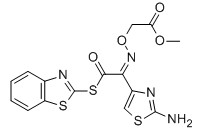 |
For Cefixime |
|
EHATA CAS No: 64485-82-1 Purity: ≥98% |
 |
For Ceftazidine |
|
2-Chloroadenine CAS No: 1839-18-5 |
 |
For Cladribine, Fludarabine et al |
|
Bicyclo(2,2,1)Heptane-2,3-di-exo-carboximide CAS No: 14805o-29-9 |
 |
For Lurasidne |
|
(R,R)-1,2-Bis(methanesulfonyloxy methyl)Cyclohexane CAS No: 186204-35-3 |
 |
For Lurasidone |
|
3-(Piperazin-1-yl)benzol[d] isothiazole CAS No: 87691-87-0 |
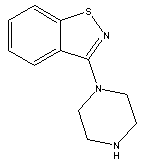 |
For Lurasidone |
|
Trityl olmesartan CAS No: 144690-92-6 Purity: ≥98% |
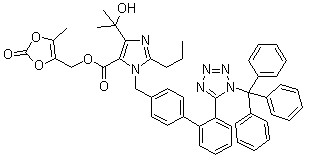
|
For olmesartan |
|
3-Acetyl Pyridine CAS No: 350-03-8 |

|
For Risedronate Sodium |
|
3-(AceticAcid)pyridine HCL CAS No: 6419-36-9 |
 |
For Risedronate Sodium |
|
Risedronic Acid CAS No: 105462-24-6 |
 |
For Risedronate Sodium |
|
3-Hydroxy-1-adamantyl-D-Glycine CAS No: 709031-29-8 |
 |
For Saxagliptin |
|
(1s,3s,5s)-3-(aminocarbonyl)-2-azabicyclo(3,1,0) hexane-2-carboxylic acid tert-butyl ester CAS No: 361440-67-7 |
 |
For Saxagliptin |
|
(S)-N-Boc-3- hydroxy-adamantylglycine CAS No: 361442-00-4 |
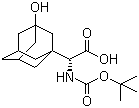 |
For Saxagliptin |
|
2-Azabicyclo[3.1.0] hexane-3-carbonitrile, (1s,3s,5s)- CAS No: 866083-42-3 |
 |
For Saxagliptin |
|
Ethyl 3-(pyridin-2-ylamino) propanoate CAS No: 103041-38-9 |
 |
For Dabigatran |
|
N-(4-Cyanophenyl) glycine CAS No: 42288-26-6 |
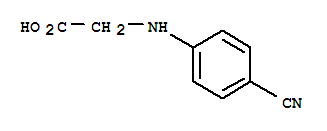 |
For Dabigatran |
|
4-methylamino-3-nitrobenzoic Acid CAS No: 41263-74-5 |
 |
For Dabigatran |
|
S-3-Amino-3-phenylpropanoic acid ethyl ester HCL CAS No: 167834-24-4 |
 |
For Dapoxetine |
|
(S)-3-Amino-3-Phemylpropan -1-ol CAS No: 82769-76-4 |
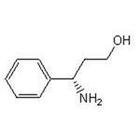
|
For Dapoxetine |
|
(S)-3-Dimethylamino-3-Phemylpropanol CAS No: 82769-75-3 |

|
For Dapoxetine |
|
4-{4-[4-(hydroxydiphenylmethyl)-1-piperidinyl]-1-butynil}-α,α-dimethyl benzene acetic acid CAS No: 832088-68-3 |
For Fexofenadine HCl | |
|
Methyl 2-(4-(4-chlorobutanoyl)phenyl)-2-methylpropanoate CAS No:154477-54-0 |

|
For Fexofenadine HCl |
|
5-Bromo-2-chlorophenyl)(4-ethoxyphenyl)methanone CAS No 461432-22-4 |

|
For Dapagliflozin |
|
4-(5-Bromo-2-chlorobenzyl)phenyl ethyl ether CAS No :461432-23-5 |

|
For Dapagliflozin |
Mica Ester,Pharma Intermediates,Ciprofloxacin Hcl Uses,Active Pharmaceutical Ingredients
NINGBO VOICE BIOCHEMIC CO. LTD , https://www.pharma-voice.com